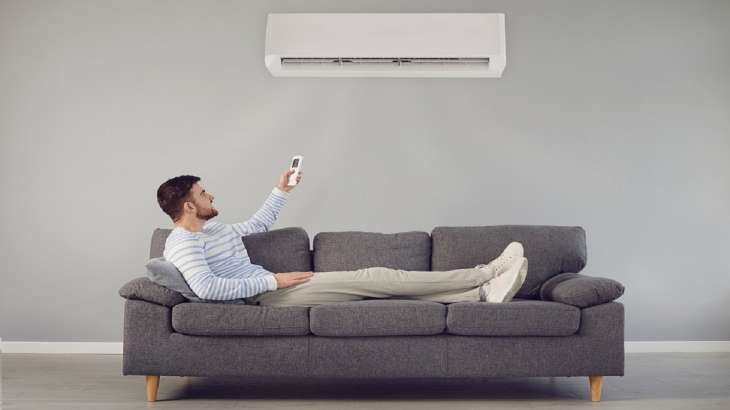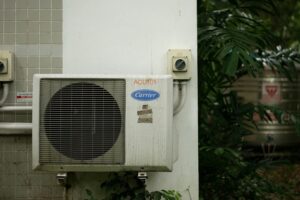If you are considering buying a new air conditioner or upgrading an existing one for your home or office this summer, there are simple tips that you can follow to get the right estimate of cooling capacity and choose the correct size air conditioner.
One of the integral parts of maintaining a very healthy and comfortable indoor environment is getting the perfect matching air conditioner for different size living or workspaces. While looking for residential air conditioners, you may have become familiar with the different types on offer, such as single-split air conditioners, multi-split systems, ducted types, and the various functions that they offer. You also might have encountered the term BTU but are not quite sure what it means or how to interpret it as part of your decision-making. If you are considering buying a new air conditioner or upgrading an existing one for your home or office this summer, there are simple tips that you can follow to get the right estimate of cooling capacity and choose the correct size air conditioner:
Measuring an AC’s cooling capacity: BTU or Tons or Tonnage
In air conditioning, BTU (British Thermal Unit) is the unit used to indicate the quantity of energy used to remove heat from an area in an hour. As mentioned, air conditioners move energy from one place to another, and BTUs tell us the power of an AC. For example, a 12000 BTU unit can remove 12000 BTUs from a room in an hour.
Along with BTU, one of the most common cooling power units you can encounter is tons of tonnage. As BTUs are a small unit that is measured in thousands, tons are used as larger unit for measuring an air conditioner’s cooling capacity. One ton of cooling is equivalent to around 12000 BTU. Knowing this, it becomes easy to convert BTU into tons, simply divide the BTU figure into 12000. Therefore, when you are looking at an air conditioner of 18000 BTU, it means it is a 1.5-ton AC.
How many BTU’s you need?
As an estimate based on size alone, ACs need 20 BTUs per square foot and an average ceiling height. The formula to calculate the required BTUs is simple-20 BTU x 1 sq/ft. For instance, If you want to cool a 600 sq/ft space with an 8 ft ceiling, you will need a 12000 BTU air conditioner. This is an estimate for a room that is exposed to average climate conditions.
As another example, to cool a two-room apartment (living room and bedroom) of 800 sq/ft, you would need a 16000 BTU air conditioner. For a large family house of 12000 sq/ft, a 24000 BTU system will be needed. Calculating the capacity your home needs is easy once you understand the formula above.
When an air conditioner’s BTU is too low:
The air conditioner will run at its maximum power continuously and still will not reach the desired comfort level.
When an air conditioner’s BTU is too high:
As it turns out, a higher BTU number is not always the best. When the air conditioner is too powerful, it will quickly cool the room off and turn off the cycle. Then it will cycle on again to keep the temperature. This continuous on-and-off cycling in such short periods of time makes the AC unit work harder than needed.
Other factors to consider:
- Number and size of windows and sun exposure- Sunlight is usually considered a good thing, but windows can let a great deal of heat in through sunlight. If your home has many or very large windows, you will get greater sun exposure and your AC will need more power to cool your home off.
- The direction your home faces. Which way your home faces can affect the way it accumulates heat throughout the day. Generally, an East-facing house gets the most sun exposure at the coolest time of the day, in the morning. Meanwhile, a West-facing house gets sun exposure at the hottest time, from the afternoon onwards.
- Relative humidity. If you have experienced a hot humid summer, you know that higher humidity makes the air feel hotter and more uncomfortable. This is because hot air cannot dissipate in those conditions, it gets trapped by humidity. If you live in a high-humidity region, look into AC units that feature the Dry Mode function, which helps to lower ambient humidity.
- Insulation. A building’s insulation is critical for air conditioning and heating effectiveness. A properly insulated house will keep the cool air from escaping and keep the heat outdoors. As a first step, check your doors and windows for any gaps that could let the cool air out.
- House layout and distribution. As a factor that is not directly impacted by BTUs, but rather the type of air conditioner should take the house layout taken into consideration. It is very different to cool an open concept studio apartment than a flat with a separate bedroom. Usually, this establishes the type of AC recommended, as single split wall-mounted air conditioners are ideal for single rooms, while multi-split units can be used in various rooms throughout the house, and both of these systems come in a range of different BTU cooling capacities.
By rightly estimating the required cooling capacity for various living spaces and considering some of the above factors, you can easily ensure an energy-efficient and comfortable indoor environment.
Fuente: https://www.indiatvnews.com






